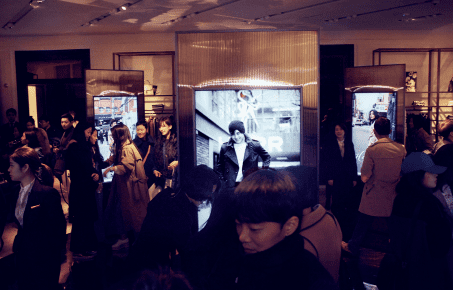More brands are responding to customer demand and selling direct, writes Chloe Rigby
Brands are moving centre stage in the retail experience, driven by demand from shoppers who want to buy their favourite products wherever, whenever and however they want. It’s an evolution that is not only changing the way brands sell to and engage with customers, but will have a lasting effect on the way that retailers operate.
In recent years shoppers have visited marketplaces and multibrand retailers, such as department stores, to find the products they want to buy from the brand names they recognise and trust. Marketplaces recognise this focus on brands in the way that they make it easy both for sellers to list their wares by brand name and for visitors to search by brand. eBay’s own research, which questioned 2,000 UK online shoppers in August 2016, found that 88% of UK consumers expected to find their favourite brands through online marketplaces. Their first interest was in price: 80% of respondents rated this as one of their top three priorities. That was followed by choice (59%) and convenience (46%).
Some consumers visit marketplaces for a safe, guaranteed shopping environment and, as long as they get the products they want for the price they want to pay, the seller’s identity is secondary. But many prefer to know that they are buying from an even safer source: a trusted retailer or the brand itself.
Going direct
For brands, marketplaces can prove a useful tool to launch fledgling direct sales operations, to test new markets and to make incremental sales to customers who want to buy where they are. But they take more control over the customer relationship when they sell through their own websites. At the same time, this gives shoppers more certainty: they know where the product comes from, and that makes it more likely it will be satisfactory and that it will be in stock.
“Brands take more control over the customer relationship when they sell through their own websites.”
Brands sell direct when they know that consumers want to buy from them. Upmarket country clothing brand Barbour, which has directly managed its own ecommerce for the last two years, will next year launch a transactional site for the US market in direct response to the number of hits its brand marketing website sees from transatlantic visitors. “We hadn’t really intended to launch a transactional website in the US,” said Paul Johnson-Barnett, head of distribution at Barbour, speaking at eDelivery Conference in October, “but when you get 1.5m hits to [the non-transactional website] you need to do something. I’m sure a lot of that was about brand research, but I’m sure there’s an awful lot of people that wanted to buy.” While Barbour learns over the months ahead what US customers want of the brand, it will service the market from the UK.
Direct selling is a logical way for brands to boost sales and profits. Not only does this approach give brands a better chance of winning every sale, but they interact directly with shoppers. These shoppers tell them what they want to buy, and how they want to buy it. But the direct approach comes with challenges that will be new to many brands that haven’t previously sold direct. They range from developing and operating transactional websites through to offering convenient and competitive customer service and delivery promises.
InternetRetailing research tells us that the Top100 European brands are, on the whole, meeting those challenges. German brands offer the fastest delivery, getting products to their buyers in an average of four days. The speed at which they deliver keeps pace with the speed at which German retailers deliver, as seen in IREU Top500 research. Meanwhile, UK brands offer the most choice, with an average of between two and three options, a statistic that also keeps pace with IREU Top500 research into retailers.
Fashion brands, as might be expected, perform strongly on merchandising, while leading brands score highly on customer service metrics. They answer emails in an average of 23h, respond to Facebook queries in 8.5h and resolve telephone queries in an average of 1m 40s.
Nonetheless, brands don’t tend to compete directly with the retailers that stock their goods. Rather, they are providing a customer experience for those shoppers that want to buy with them rather than through a third-party retailer. In the case studies in this report, both Barbour and Lego say they want the customer to enjoy the experience of buying their products, whether they do so directly from them or from a retailer.
When brands do offer a service that outshines the retailers that resell their goods, it follows that traders must find another way to offer competitive service. Apple, for example, is not only a manufacturing brand that creates highly aspirational products, but it is also a highly successful retailer. Stores showcase the latest Apple devices in a technology-driven showroom environment that is supported by a high level of customer service. Its online service is fast and efficient, delivering products through a standard next-day delivery service that, with a qualifying order value of £40 for UK shoppers, is free for most shoppers.
How can the retailers that Apple supplies compete? UK retailer John Lewis does just that – by offering a two-year standard guarantee against the product failing that is double the length of Apple’s one-year standard guarantee. In the future, department stores such as John Lewis will potentially have to compete against the thousands of brands that supply them – and outperforming in areas such as longer guarantees or better customer service is one way of doing so. Longer term, such competition is likely to drive real change in the retail industry as well as among brands, as retailers and brands vie to outperform each other.
Apple is not alone: more and more leading brands are showcasing their products in their own flagship stores, where they can control a customer experience that, by definition, puts their own products first. Lego this month [November 2016] opens its largest flagship store yet. It promises that its Leicester Square, London, shop will also be its most digital to date.
But even with the growth of brand stores, retailers remain a vital conduit for brands such as these. One reason for this is that global brands enjoy such widespread recognition. In Lego’s case, Legoland theme parks and a wide range of Lego-themed cartoon series and films – of which The Lego Movie is the best known – drive many more sales than can be satisfied through the limited number of stores that it operates directly.
The high street still matters
Moreover, shoppers insist the high street remains important to them. The Barclays New Retail Reality report from November 2016 found that 63% of UK shoppers still prefer to visit high street stores to see products before they buy because they want to see, touch and feel goods for themselves before they buy. That puts the onus on brands to ensure their products can be found in third-party high street stores across the world.
Burberry , for example, has its own network of well-placed high-end shops. It also values the position that it gains in the high quality stores run by the retailers it supplies, where Burberry is competing against the other brands that are sold. In its latest financial results, for the half-year to 30 September 2016, it highlighted a partnership with Barneys, the New York department store, that promoted its brand both in the store and online. Just as such partnerships are valuable to an advanced omnichannel brand such as Burberry, so retailers and brands will be working together, and learning from each other, far into the future. They’ll be learning about developing their multichannel models, about what their customers want, from search to checkout and beyond, and how best to deliver that.
It’s an inter-reliance that will no doubt see brands and retailers both drive improvements in the future. The winner in all this will not be the retailer or the brand, but the customer. And since ultimately it’s the customer’s buying power that enables retail, that’s probably the way it should be.
What is a brand?
Just as we set out in the IREU Top500 report the fact that there’s more to being a retailer than operating a website or a store, so there’s more to being a brand than being a retailer. The key difference lies in the fact that brands sell their own branded products to retailers. As we’ve set about deciding which companies constitute brands we have measured them against the following definition:
- Destination: the brand has created a destination that customers visit in order to buy a product, service or experience. That destination might be a shop, a website or an event.
- Purpose: the brand has created goods and/or services in order to sell them to consumers.
- Merchandising: the brand actively sells, rather than acting as a portal to accept customers’ payments. That means choosing, promoting and tailoring offers to customers.
- Acquisition: the brand actively markets, recruits and attracts customers with a promise or proposition to the destination.
- Sale: the brand takes the customer’s money. The brand owns the transaction as the merchant of record.
- Recourse: the brand is responsible for the service, fulfilment and customer satisfaction owing from the sale.
- Fascia-focused: the assessment focuses on individual trading names, rather than a parent company that may operate more than one brand.
- In-house brands: we have excluded retailers’ own brands.
- Exceptions: in every good list there’s an exception, where we may include a business due to its influence upon brands and brands’ customers.
Liked this article? Click here to subscribe and receive all future reports straight to your inbox.






